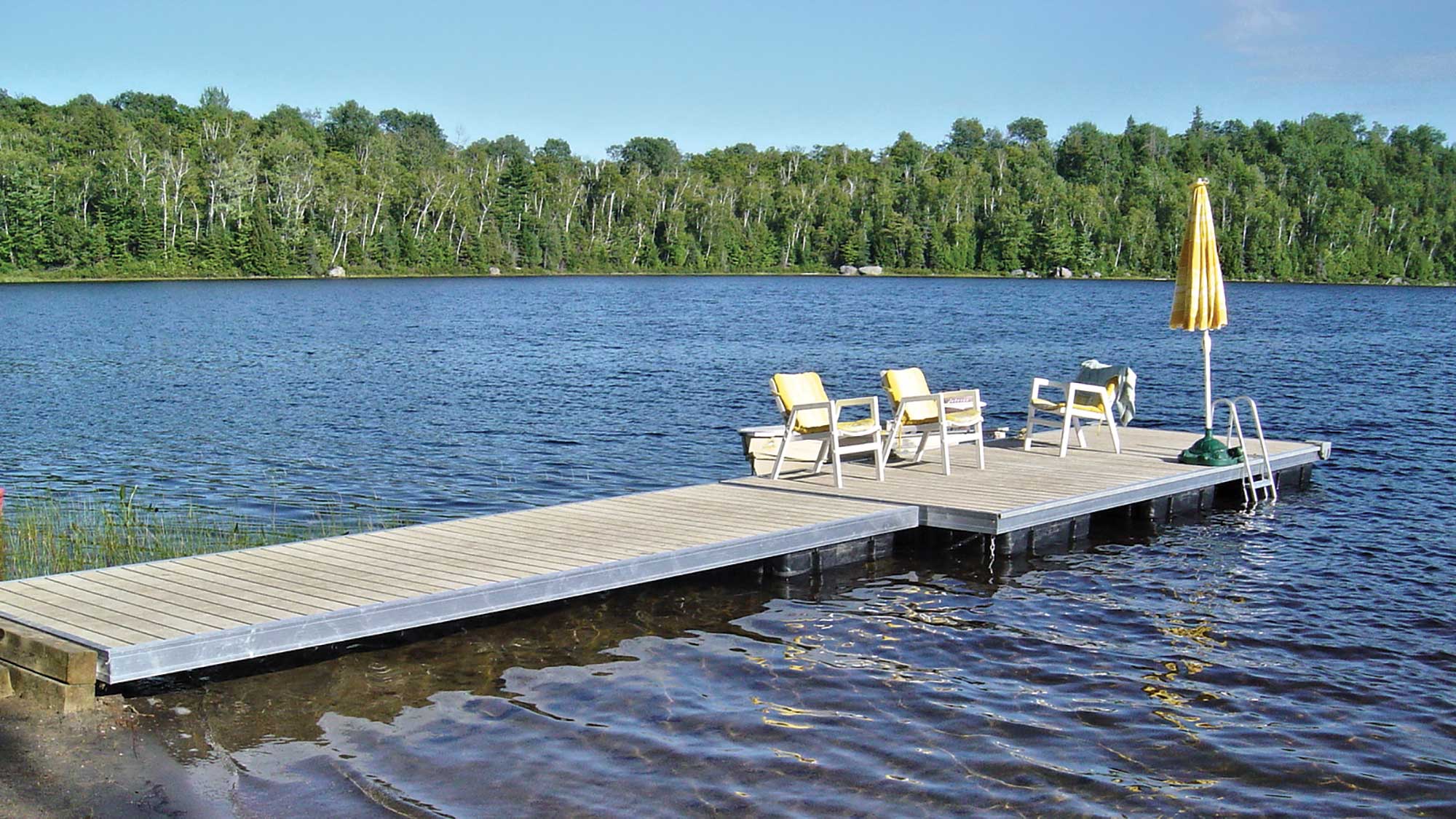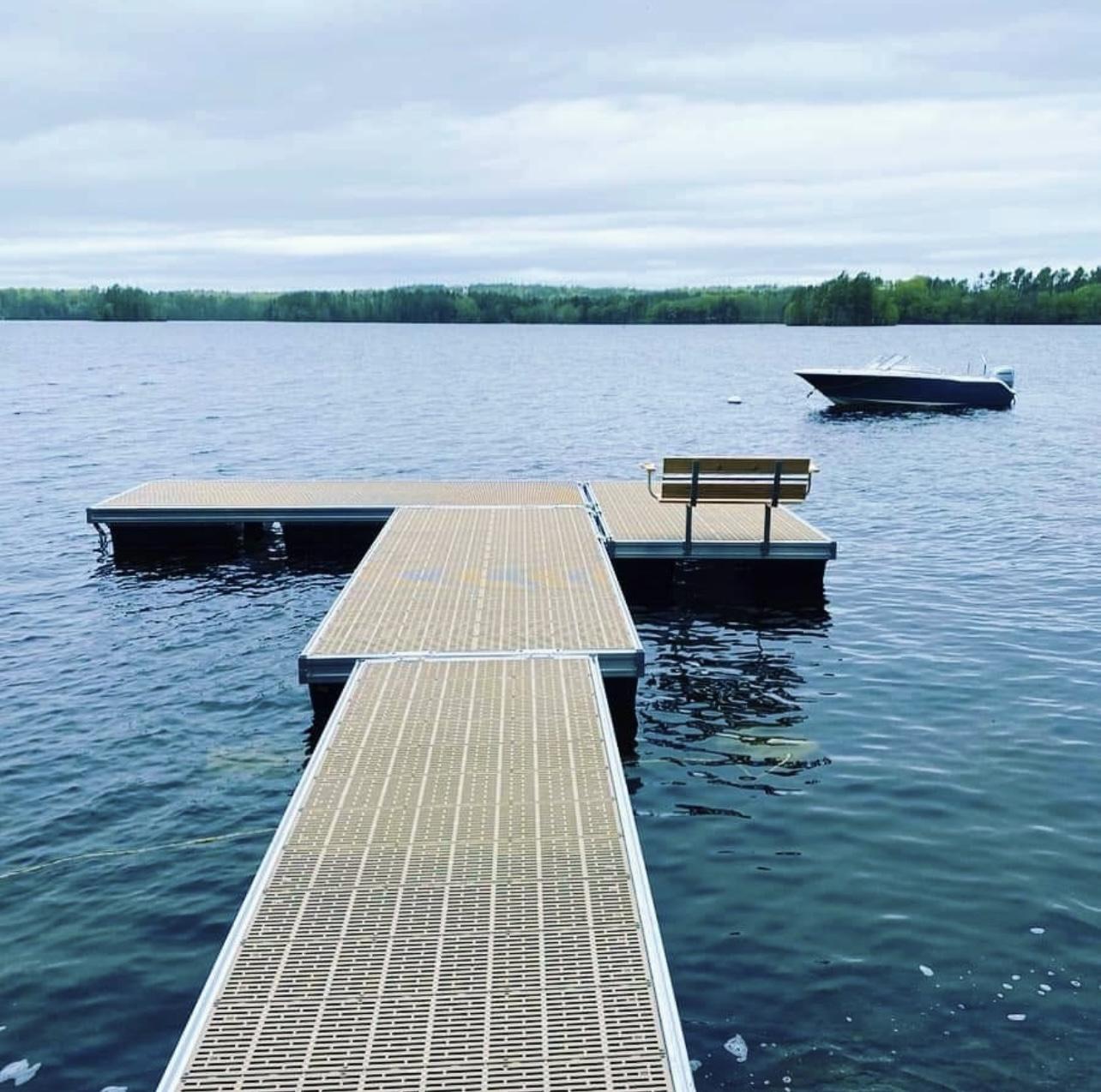Optimizing Your Outdoor Room with Specialized Floating Dock Providers
Wiki Article
Create the Perfect Docking Remedy With Floating Docks
Floating docks present a functional solution for a selection of maritime requirements, adjusting flawlessly to changing water degrees and diverse vessel kinds. Their modular nature enables fast installment and moving, yet the selection of appropriate products and design functions is crucial for ensuring both functionality and aesthetic allure. As we check out the important aspects that add to the effectiveness of floating docks, several crucial variables pertaining to security and maintenance will arise, questioning concerning exactly how to enhance your docking experience. The subsequent conversation will illuminate these essential factors to consider.
Advantages of Floating Docks
Floating docks deal many benefits that make them an ideal choice for numerous maritime applications. Unlike fixed docks, floating docks rise and loss with the trend, making sure constant availability for vessels.In addition, floating docks are commonly easier and quicker to install compared to conventional fixed structures. Their modular style enables straightforward setting up and disassembly, helping with maintenance and relocation when required. This versatility is specifically helpful for momentary applications or in atmospheres where problems might transform.
Floating docks likewise tend to be extra environmentally pleasant, as they lessen disruption to the seabed and bordering aquatic ecological communities. Their buoyant nature reduces the threat of damage to aquatic life, promoting a much healthier setting. These docks can be customized to suit different vessel sizes, ensuring that they satisfy certain operational requirements.
Inevitably, the combination of adaptability, ease of installment, and ecological considerations makes floating docks a highly reliable remedy for a vast array of maritime needs.
Picking the Right Materials
Choosing the proper materials for floating docks is important to guarantee resilience, longevity, and stability. The option of products straight impacts the dock's performance in numerous environmental problems, consisting of exposure to water, sunlight, and possible wear from aquatic web traffic.Common materials made use of for floating docks consist of light weight aluminum, timber, and high-density polyethylene (HDPE) Light weight aluminum is lightweight, corrosion-resistant, and needs very little maintenance, making it an excellent choice for longevity. Nonetheless, its preliminary expense can be higher compared to various other products.
Wood, while visually attractive and offering a traditional look, can be susceptible to rot and insect damages otherwise effectively dealt with. As a result, utilizing pressure-treated wood or normally sturdy types like cedar or redwood can mitigate these concerns.
HDPE is a preferred option due to its resistance to UV rays and chemicals, in addition to being eco friendly. dock company. It is readily available and lightweight in various shades, enabling for modification
Inevitably, the best product choice will certainly depend upon details demands, consisting of budget plan, wanted appearances, and environmental factors to consider. Cautious evaluation of these aspects will certainly result in a durable and effective floating dock service.
Layout Considerations for Security
When making floating docks, guaranteeing stability is an essential facet that can dramatically affect their functionality and security. Stability in floating dock design is influenced by different aspects, consisting of buoyancy, weight circulation, and the setup of parts.Weight circulation is crucial; equally dispersing tons across the dock prevents turning and improves stability. Bigger layouts can provide enhanced security, specifically in rough water conditions, while longer docks may require added supports to prevent drooping.
One more vital factor to consider is the environmental influence, consisting of wave action and wind. Including functions such as sidewalls or skirting can help minimize the impacts of environmental forces, keeping stability in negative problems. Eventually, a mix of thoughtful style, product choice, and understanding of environmental aspects will produce a floating dock that satisfies both stability and security requirements.
Installment Tips and Techniques

Next, secure the necessary permits and comply with local regulations, try here which might determine setup techniques and environmental considerations. Engage a qualified contractor experienced in floating dock setups if needed. Use high-quality products created for marine environments to boost longevity and long life.
When positioning the dock, align it identical to the shoreline to facilitate very easy gain access to. Guarantee that the anchoring system is robust, using concrete blocks or helical anchors to maintain the dock against wind and wave action. It's essential to account for seasonal water level fluctuations, including possible ice activity in cooler environments.
Throughout the installment, ascertain the dock's floatation and security before settling the anchoring. Routinely inspect the installation for any kind of indications of wear or damages. By complying with these pointers and techniques, you can achieve a secure, practical, and cosmetically pleasing floating dock installment that fulfills your demands.
Maintenance and Care Guidelines
Caring and preserving for floating docks is important to prolonging their lifespan and making sure secure usage. Regular assessments should be conducted to identify any type of indications of wear, damages, or aquatic growth. Seek cracks, loosened fittings, or tarnished areas on the dock's surface area, as these concerns can endanger structural stability.Cleaning up is essential. Use a stress washer to eliminate algae, barnacles, and debris, which can accumulate gradually. For stubborn growth, consider eco-friendly cleaning agents that won't hurt marine life.
In addition, inspect the mooring lines and supports regularly to guarantee they are safe and free from rust. Replace any kind of frayed or damaged lines immediately to preserve stability.
During severe climate, such as storms or freezing conditions, take precautionary steps. Safeguard the dock with added mooring lines and, if practical, eliminate any type of detachable parts to avoid damages.
Verdict
In verdict, the application of floating docks provides a reliable and versatile docking option suitable for different maritime applications. With correct installment and regular maintenance, floating docks read review can give effective and trustworthy docking experiences for a wide variety of vessels.As we discover the important aspects that add to the performance of floating docks, a number of vital factors concerning security and upkeep will certainly emerge, increasing inquiries regarding just how to enhance your docking experience. Unlike fixed docks, floating docks increase and autumn with the trend, making certain consistent ease of access for vessels.When creating floating docks, making sure security is a basic facet that can significantly impact their performance and security. Stability in floating dock design is influenced by various elements, including buoyancy, weight distribution, and the plan of components. Ultimately, a combination of thoughtful design, material selection, and understanding of ecological variables will certainly generate a drifting dock that fulfills both security and security demands.
Report this wiki page